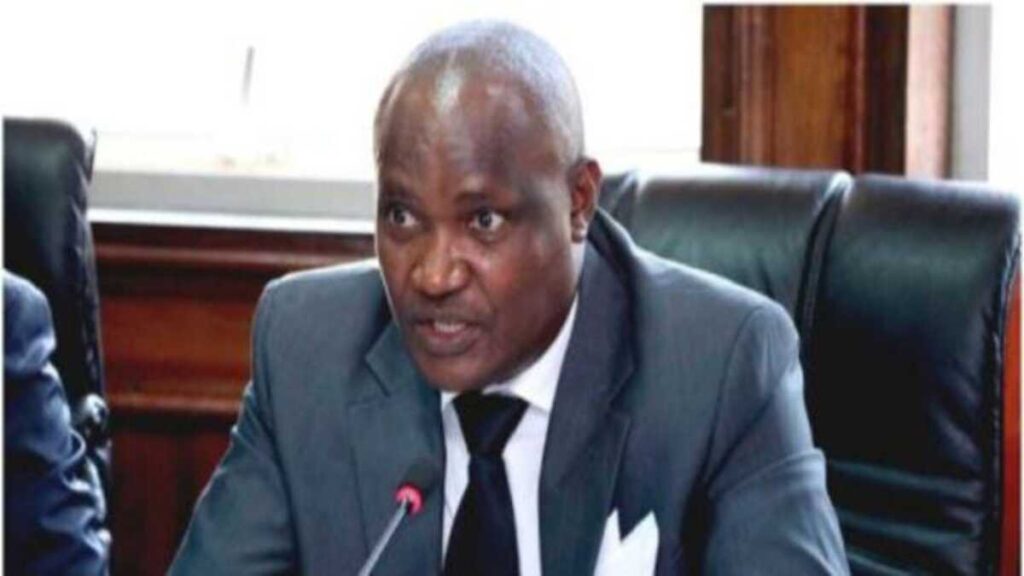Kenya’s Parliament is poised to grant President William Ruto significant leeway in borrowing, with plans to amend the country’s debt ceiling. This move comes amid rising public debt, which has already surpassed 70% of the Gross Domestic Product (GDP). The proposed legislation, known as the Public Finance Management (Amendment) No. 4 Bill, 2024, seeks to convert the existing Sh10 trillion debt ceiling into a more flexible framework based on a percentage of GDP, specifically a threshold of 55% plus an additional five per cent allowance.

File Footage of CS Treasury John Mbadi
The push for this amendment reflects Kenya’s ongoing economic struggles and the government’s pressing need for financial resources. As of March 2023, the national debt stood at approximately Sh9.39 trillion, projected to exceed Sh10 trillion by mid-2024. The current debt-to-GDP ratio is estimated at around 60%, indicating that the government is already operating beyond the proposed new limits.
The rationale behind this legislative change is to align Kenya with international best practices as recommended by the International Monetary Fund (IMF). By establishing a debt anchor as a percentage of GDP, lawmakers aim to create a more sustainable fiscal environment that can accommodate economic fluctuations and provide clearer guidelines for future borrowing.
During discussions in Parliament, Majority Leader Kimani Ichung’wa highlighted the necessity of providing President Ruto with a “blank cheque” for borrowing. He argued that without this flexibility, the government would struggle to finance essential services and infrastructure projects. Critics, however, have expressed concern about the potential for increased fiscal irresponsibility, warning that excessive borrowing could lead to long-term economic instability.
The proposed amendment has sparked considerable debate among MPs. Some lawmakers argue that raising the debt ceiling may further burden ordinary Kenyans through increased taxes or reduced public services. Others contend that without adequate funding, vital government programmes could be jeopardised, exacerbating existing socio-economic challenges.
Kenya’s reliance on external borrowing has raised alarms among financial analysts and institutions. The World Bank has previously warned of a high risk of debt default if current trends continue. The government’s heavy borrowing has been attributed to several factors, including ambitious infrastructure projects and recurrent expenditure needs that have outstripped revenue collection capabilities.
Moreover, the high cost of borrowing in both domestic and international markets poses additional challenges. As interest rates rise globally, Kenya faces increasing pressure to refinance its debts under less favourable terms. This situation is compounded by inflationary pressures and currency depreciation, which further strain public finances.
The public response to these developments has been mixed. Many citizens are concerned about the implications of increasing national debt on their economic well-being. There are fears that continued borrowing could lead to austerity measures in the future as the government attempts to manage its fiscal responsibilities.
Looking ahead, if Parliament approves the amendment, it will mark another significant shift in Kenya’s fiscal policy framework. The government will need to demonstrate a commitment to responsible borrowing practices while also addressing urgent funding needs for development projects and social services.
As Kenya navigates these complex economic challenges, the decision to amend the debt ceiling will have lasting implications for its fiscal health and economic stability. Lawmakers face a critical juncture: balancing immediate financial needs with long-term sustainability in public finance management. The outcome of this legislative process will not only shape Kenya’s economic landscape but also influence public trust in government financial stewardship moving forward.



















